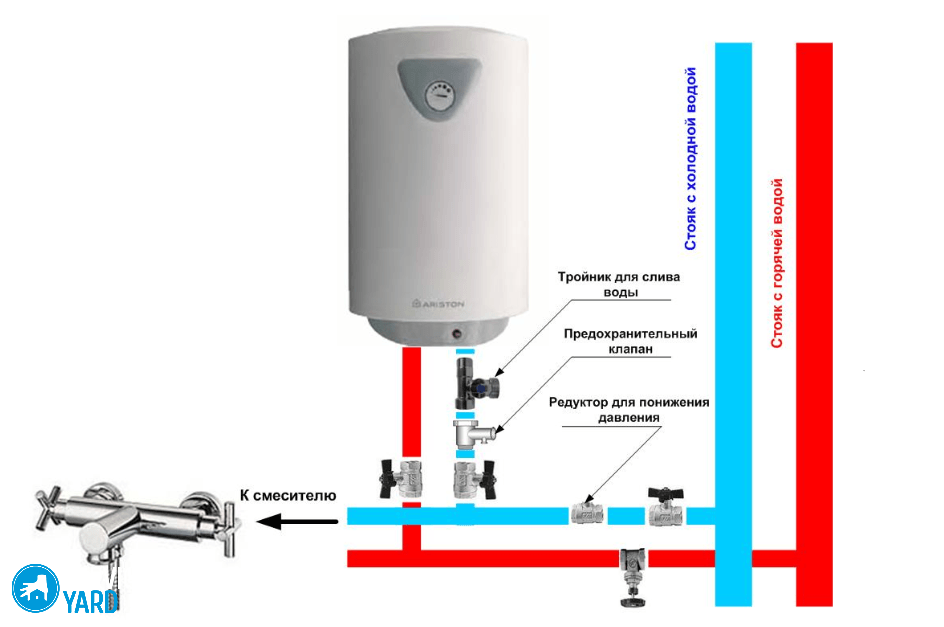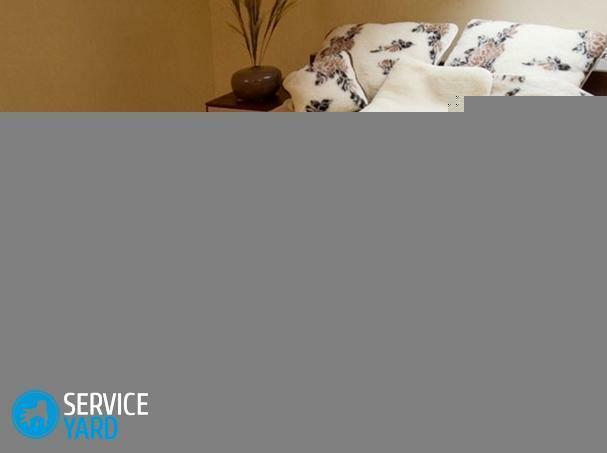During the construction of private cottages, holiday homes or any public building, the main task is to maximize the reduction of heat loss facade. This leads to a reduction in fuel costs different, whether it is gas or firewood. To do this, carry out the use of different types of insulation. Affordable in price respect embodiment is different insulation walls expanded clay.

The choice of material and what fraction is better
To understand how to keep warm and insulate the walls expanded clay, must be disassembled in the understanding of the material.
The concept of "concrete block" is a collective term and implies the existence of a heater in a few varieties. But they all share some common aspects. First of all, the raw material for production. It is presented in three fractions gravel, sand and gravel.
Gravel
It has the form of round or oval pellets. It is obtained by firing clay and the venue are rotary kilns. Gravel has various applications, due to its diameter fractions:
- 20-40 mm. In this form it has the lowest bulk density. It is used where needed to fill a thick layer of insulation. It is used mainly for the dumping of the foundation base, attic floor, cellar.
- 10-20 mm. this insulation used for floors, Roofs, walls, if they are made using the method kolodtsevoy masonry.
- 5-10 mm. It is mainly used as a base under the "warm" floors. In addition, they are insulated from the outside facades. The mixture was poured cement with expanded clay between masonry and cladding.

Sand
It is produced at screenings clay fines. In addition, produced fragmentation of large chunks of expanded clay in blast furnaces. Field of application depends on the size fractions:
- expanded clay sand with a grain size up to 5 mm operate cementitious floor screed, wherein the layer thickness may be up to 20 cm;
- sand with a grain size up to 3 mm are used for "warm" masonry mortar.
crushed stone
It is produced when crushing large pieces of dried clay. It is used as heat-insulating filler, when producing concrete structures in which the smaller specific gravity.

For right choice of expanded clay is necessary to pay attention to the following characteristics:
- The ability to isolate heat and sound. It has a value of coefficient of thermal conductivity, which granules possess. It is best to store heat in the presence of beads with low thermal conductivity. Expanded clay granules with a diameter of 10-20 mm are the best option when using bulk insulating materials. With their use greatly reduces the magnitude of heat losses.
- The value of the bulk density. If it is necessary to equip the base of the foundation, the density of the granules is important. It depends on many factors. The most significant of these is how the quality has feedstock. Are important rules for compliance with the process heat-treated granules in furnaces. To enhance strength, various additives may be used.
- The ability to absorb moisture. The material should have a correlation coefficient of not less than 0.46. If the rate is lower, the granules absorb and retain moisture. This is an indication of poor quality products.
- Resistance to putrefaction and fungal attack. If the material is influenced by the action of the fungus and rot, then it suggests that the production of low-quality additives used. Such a concrete block can not be used for thermal insulation of walls.
- Resistance to fire. The use of expanded clay is not only insulated house, but helps improve fire safety.
Based on these data, you can find the perfect option for certain types of work related to the insulation of the building walls.
How long will the material: how to count
Building a house involves large financial costs, and of course, if there is an opportunity to save money, it is worth to take advantage of. This will require the right to calculate the necessary amount of insulation, not to overpay for superfluous.
The calculations must take into account the thickness of the expanded clay. On this depends koeffichient thermal conductivity. On average, for the effective insulation thickness should be 10 cm. Then you will need 1/3 of the cube. View as part of expanded clay kilogram in one cube can be on the packaging, of about 15 to 800 kg, depending on the species. If your concrete block weighs 300 kg, then 1 cc will need 60 kg.

keramzita cost also depends on its type. The smaller the fraction, the higher the price. The average value ranges from 1700 to 2800 p. Per bag.
Advantages of expanded clay as insulation
In this material there are a number of positive qualities that contribute to its extensive use in the construction industry:
- Environmentally friendly. Made from natural raw materials, so its application is considered safe.
- Affordability. The low cost makes this material a very popular and profitable in the construction of the house.
- Easy to use. Due to their small size, the granules may fill any gaps.
- Low weight makes the load on the foundation.
- Due to quality specifications to withstand temperature extremes, due to this is used in different climatic zones.
The benefits may also include resistance to rotting material, it does not attract rodents and insects. Its use will allow for a long time and securely retain heat in the house.
Technology insulation of walls keramzit
Performing a heat insulating structure necessary gravels mixture which comprises granules with different diameters. This isolation has good adhesive properties.

Preparatory work
Before installing the insulation, it is necessary to lay the waterproofing. It protects concrete block from excess moisture. You can use ordinary plastic wrap. After laying the edges are fixed by an adhesive tape construction.
It is better to use concrete block when the new building is insulated, even when only carried out its construction. In this case a three-layer masonry. Each layer is associated with certain characteristics. The carrier layer is performed using lightweight aggregate concrete blocks with a thickness of 20 to 40 cm. granulated expanded clay and cement milk is used for the base layer. The last layer is a wooden lamella, or brick protection.
Before insulator stack, it poured with cement milk. Thus quickly grasp separate fractions, and ultimately faster and hardens the entire layer as a whole. Styling need many tools. Work is carried out using a trowel that is used bricklayer, mortar shovels, hammer, chisel. Do not do when working without level and plumb, measuring tape. Furthermore, it is necessary to prepare a container in which the solution is mixed.
Technique of work of warming the camp expanded clay
For work you need the following materials: sand, cement, expanded clay screenings and reinforcing mesh.

Once the selected method by which the heat insulator is stacked, the thickness is determined backfill. Professionals recommend to have some margin. This is achieved by improving the sound and heat insulation, which will have a wall.
During the construction of private homes mainly use well masonry. When there is a layer of insulation between the inner and outer wall in the middle of the masonry.

With this wall insulation brick house expanded clay, masonry is not that thick, but has good performance related to thermal conductivity. In this case, a smaller quantity of consumed materials for construction. But it requires precision planning work, in which the run of the diaphragm.
Inside the well can collect the condensate liquid. To prevent this, the inner surface coated with a layer for insulating steam. Assembly when performing such work entire wall may have a thickness of 30 to 60 cm.
Laying is simple and is carried out according to the following sequence of actions:
- performed ground. They are the bottom two rows of bricks. Before stacking them on the foundation runs a horizontal waterproofing layer;
- carried perform parallel exterior walls and partitions to their connection (Aperture);
- when performed 5-6 series, the well spend filling insulation. After that it must be properly compacted. Filling is carried out exclusively dry gravel and do it in layers. Top heater poured cement-based solution;
- put down before backfilling foam sheet having any waterproofing. This does not allow the material to absorb moisture from the ground and remain dry inside;
- Then, the concrete screed. It serves to give greater rigidity;
- further carried perform horizontal diaphragms;
- construction of the wall continues in this way until the end.
Also we recommend that you read the companies' bright window "link svetokna.ru. The company is engaged in manufacturing of windows, doors, balconies and loggias PVC.
Performing finishing
Upon completion of the wall insulation dry for a few days. Finally curing is completed in a month. Next, a trim and trim. For finishing, you can use bricks or wood. Before that, the walls are plastered. This is accomplished, both outside and inside. This achieves additional insulation of steam and moisture. The outer plaster layer to protect the structure from precipitation. In addition, the structure is given, and high stiffness.
In order to prepare a solution, cement and river sand (M400) were mixed in a ratio of 4: 1. Finishing can be carried out, and decorative stone. This is a pretty good solution. They can do the work, not only outside but also inside the building. It is a good interior design without exerting significant pressure on the additional structure. On such a material must be free of visible blemishes and growths. Even better would be if the outer surface is coated with a water repellent composition.

With a relatively low cost of expanded clay as insulation, it is very popular. Performing similar work, the house is warm and comfortable. But it is necessary to monitor the load on the performance of the foundation base and structure as a whole. The rest of the house warming with the help of expanded clay is considered to be a profitable option. This is one of the indicators of its widespread popularity. It should also be said that the work associated with the warming expanded clay of a private house, is not particularly difficult.



